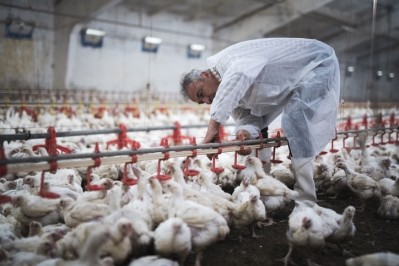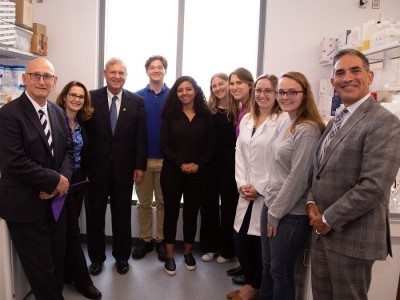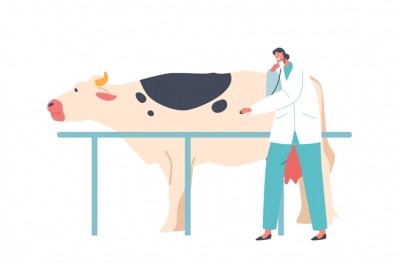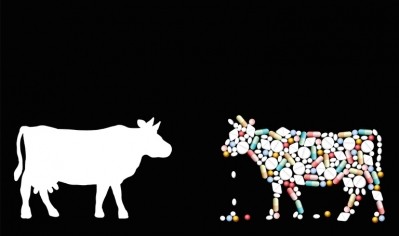Global antimicrobial use in farm animals has dropped by 13% in three years
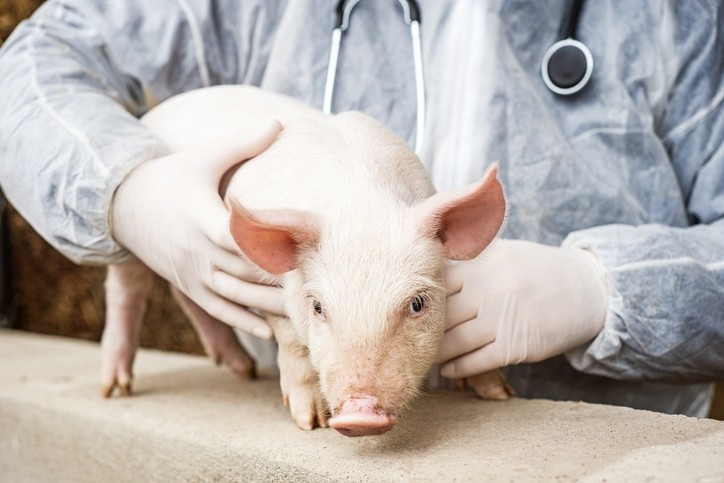
And WOAH sees encouraging progress in combatting antimicrobial resistance globally.
The organization has been collecting information on the use of antimicrobials in animals since 2015. Its annual report aims to support better understanding of the use of antimicrobials in the global animal health sector.
Decline of 13% in 3 years
WOAH’s 7th Annual Report on Antimicrobial Agents Intended for Use in Animals shows that global antimicrobial use in animals has declined by 13% in three years. That finding is based on data collated from the 80 participating countries that consistently provided quantitative information on antimicrobials in animals from 2017 to 2019.
Digging deeper, the report reveals differences regionally:
“While a decrease is observed in regions like Europe (- 15%) and Asia, Far East and Oceania (-25%), an increase is observed in Africa (+45%) and Americas (+5%).”
Despite the notable increasing trends observed in regions like Africa and Americas, WOAH said that, when assessed per kilogram of estimated animal biomass, antimicrobial use in food producing animals continues its global reduction over time.
The increases in some markets “could be linked to a significant improvement in the accuracy of collected data over time; deeper analyses are needed to understand root causes.”
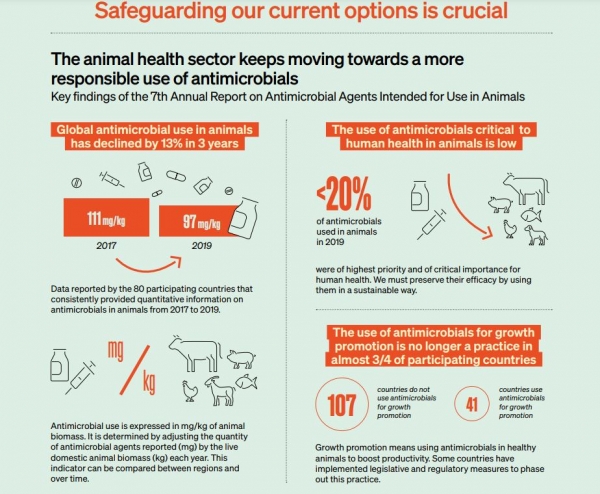
Species
The report findings reflect data for 70% of the total animal biomass around the globe (50% higher than in 2014), encompassing terrestrial and aquatic food-producing animals, with companion animals excluded from the analyses.
Bovine species account for 42% of the total coverage, followed by swine (19%) and poultry (19%). Aquatic animals account for 8% of the total coverage, being almost two-thirds represented by farmed fish.
“With all this taken into consideration, WOAH estimates that, in 2019 a total of 99.09 to 108.49 milligrams of antimicrobial agents were used per kilogram of animal biomass.”
Antimicrobial resistance
This year’s report also found that the use of antimicrobials critical to human health in animals is low, with WOAH referencing the data on antimicrobial classes reported for use in animals by 110 participating countries in 2019.
Less than 20% of antimicrobials used in animals in 2019 were of highest priority and critical importance for human health, as per the review.
“Collective efforts towards responsible use across all sectors are of utmost importance considering that these medicines are the sole therapy or one of few alternatives to treat life-threatening human diseases,” said Dr Javier Yugueros-Marcos, head of the antimicrobial resistance and veterinary products department, WOAH.
According to a study in the Lancet, almost 5 million human deaths were linked to antimicrobial resistance (AMR) in 2019.
In terms of further insights, the WOAH document shows that the use of antimicrobials for growth promotion is no longer a practice in almost three-quarters of participating countries. “Some countries have implemented legislative and regulatory measures to phase out this practice.”
“Robust animal health systems, including resilient biosecurity, prevention, infection control measures and good husbandry practices are fundamental prerequisites to reduce the burden of infectious disease in animal populations, their dependency on antimicrobials, and the risk of emergence and spread of AMR." - Dr Monique Eloit, director general, WOAH.
Data collection process
WOAH’s annual report gathers data provided, on a voluntarily basis, by veterinary services on the use of antimicrobial agents in animals. Every year, the organization invites countries to participate in the data collection process. “The data collection process has seen an overall increased engagement from countries, who have improved their capacities to provide more detailed information over time.”
As part of its efforts in the fight against AMR, WOAH spearheaded the development of a global database on antimicrobial agents intended for use in animals.
The tool, it explained, has recently been fully digitalised into an online platform: ANIMUSE. The benefits of doing so, it added, include better understanding and monitoring of antimicrobial use, faster and standardized analysis and reporting, easier access to data and information to guide decisions at national level.
“A key strength of ANIMUSE is its flexibility. Countries at any level of their surveillance programme can report on the platform. Even if a country’s insight on amounts of antimicrobials used in animals is limited, being able to join the platform fosters discussion and improvement over time." - Dr Carolee Carlson, veterinarian and epidemiologist for the Public Health Agency of Canada.

